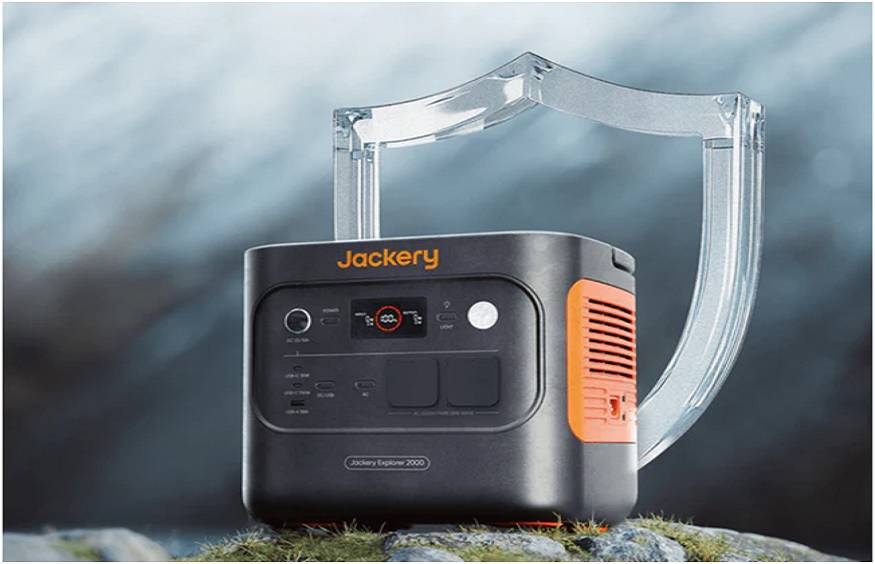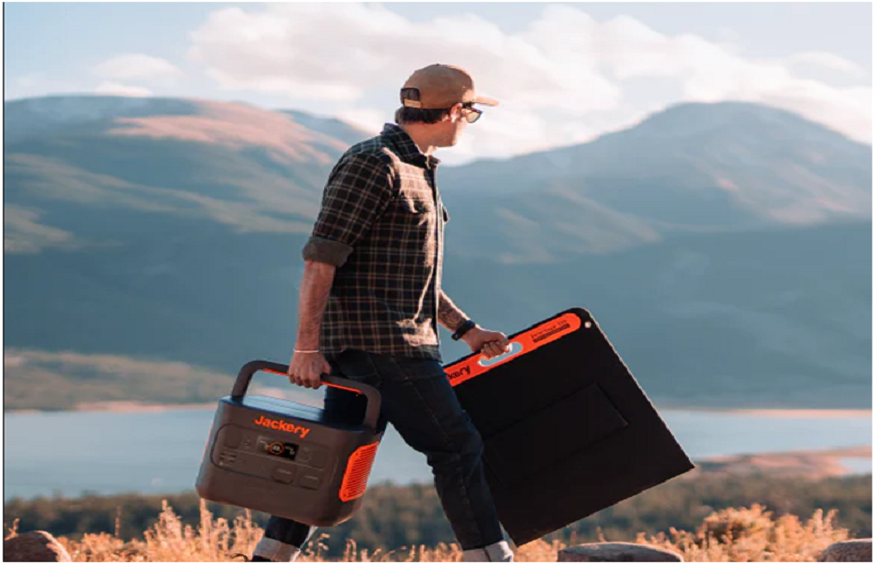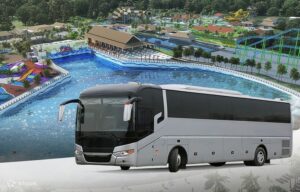Fly fishing is a unique angling form that combines precise technique with the quiet beauty of nature. Instead of using heavy lures, anglers cast lightweight flies that are carefully crafted to mimic insects and trigger a fish’s natural instincts. Across Europe, the abundance of pristine rivers, clear lakes, and mountainous landscapes has nurtured a deep-rooted fly fishing culture. However fly fishing enthusiasts need some essentials while heading towards their adventures. One of the top things they need is a power station (portable) that enables them to operate all their electronics while traveling and fishing so that they can focus on the experience itself without worrying about power availability. Jackery has a whole range of portable solar power solutions that are extremely reliable in remote fly fishing adventures.
Let’s see what skills are needed for a successful fly fishing experience.
Fly Fishing Knowledge and Skills
You need to understand how the whole fly fishing system works in order to catch the best fish:
-
Classification and Tying
Flies come in several types, each designed to entice different types of fish.
(1) Dry flies float on the water’s surface, tempting fish that hunt airborne insects.
(2) Wet flies drift below, imitating drowned bugs or emerging larvae.
(3) Nymphs go even deeper to replicate the forms of aquatic insects that live near the bottom.
-
Selection Strategy
(1) Trout, often found in faster-moving streams, respond well to lighter dry flies that mimic surface activity.
(2) In contrast, salmon, which tend to swim deeper in slower sections of rivers, are more likely to strike at weighted nymphs or wet flies that reach them underwater.
(3) Similarly, it requires larger streamers for fly fishing for pikes.
The behavior of the water itself also plays a critical role in the selection of flies.
(1) In shallow, clear streams where the current moves quickly, lighter flies usually work better because fish must react fast and have little time to inspect what is drifting by.
(2) In deeper or slower-moving water, heavier flies that sink faster are needed to reach the fish present near the bottom.
-
Casting Technique
Here are different fly fishing casting techniques, and learning them can help you catch the fish of your choice much faster and easier.
-
Basic Casting Technique
Mastering the basics of casting is where every successful fly fishing journey begins. The goal is to move the line, not the fly itself, so that it lands softly and naturally on the water. A smooth back-and-forth motion, with a clean stop at the end of each stroke, helps transfer energy through the line and unroll it perfectly across the water. When done right, cast places the fly exactly where needed without splashing or startling the fish.
-
Advanced Techniques
Not every location gives anglers the space for a full overhead cast. Obstacles like trees, rocks, or steep river banks can make standard techniques impossible. In tight spaces, backcast casting becomes essential. This method involves flicking the line backward first before shooting it forward, facilitating precise placement even when room is limited.
When backcasting is not an option, rolling casting offers a valuable alternative. It lets the angler keep the line in constant motion along the water’s surface, creating enough momentum to project the fly forward without needing a full swing. Both techniques demand practice, but they open up fishing opportunities in places where traditional casting would fail.
-
Wind Management
Wind rarely stays calm on open rivers or lakes, so adjusting the technique for wind movement is necessary for every fly fisherman. Changing the casting angle, increasing line speed, or adding more force can help maintain control when the wind picks up.
Sometimes, the wind can even work in your favor. Properly using a tailwind can help you extend the cast without extra effort. In tougher conditions, adding weight, such as tungsten beads, to the fly helps reduce wind resistance, allowing for more accurate placement even when the wind speed increases.
Unique Needs and Challenges of European Fly Fishing
Fly fishing in Europe offers incredible experiences, but it also comes with a few unique challenges. Here’s a closer look at some of the key issues anglers often face.
-
Power Supply in Remote Areas
Some of the best fly fishing spots in Europe are hidden deep within wild and untouched landscapes. These remote locations often have no infrastructure at all. Anglers must depend on personal electronics like GPS devices for navigation, fish finders for better targeting, cameras for documenting catches, and headlamps for nighttime visibility.
Without reliable access to power, operating all this equipment becomes impossible. When the battery of a headlamp dies after dusk, moving around uneven terrain near water turns dangerous. A dead GPS in a rugged valley can also turn a simple fishing trip into a dangerous situation. That is why you need a reliable and portable power station that can keep you safe and secure throughout the trip.
-
Strict Environmental Regulations
Most EU countries have strict environmental regulations that promote sustainable practices. These regulations have a significant impact on the type of power solutions that can be used in protected natural areas.
-
Noise Restrictions
In Scotland, Special Sites of Scientific Interest (SSSIs) prohibit the use of gasoline generators. The noise disrupts wildlife and destroys the natural silence that defines these protected areas.
-
Emission Limits
Across the wider European Union, emission-producing devices are banned in many protected zones, and fines for violations can be severe. This means that bringing a gasoline-powered generator becomes impractical in most worthy fly fishing places in the EU.
-
Waste Management
Beyond noise and emissions, waste management rules present another challenge. Anglers must pack out all their waste, including hazardous materials like leftover fuel or oil residues. A single oversight may cause hefty fines and damage to the natural beauty these places are trying so hard to preserve.
All these, and many other regulations, make gasoline generators a highly unfeasible choice for fly fishing trips.
-
Climate Variability and Energy Demands
Variable climate and energy demands also pose serious challenges to fly fishers in the EU. Here is how:
-
High Latitude
In northern regions like Iceland and Norway, extreme daylight cycles challenge even seasoned fishermen. During the summer months, these regions experience almost continuous daylight. Fishing trips often stretch well past midnight because the sun barely sets, permitting anglers to stay out on the water far longer than usual. Similarly, winters bring long and dark nights that demand constant artificial lighting. Energy needs shift dramatically between seasons, and if you are unprepared, it can get quite dangerous.
-
Rainy Environments
In Ireland and the UK’s Lake District, constant cloud cover and frequent rain reduce the effectiveness of solar charging. So, a portable power solution with storage is necessary.
-
Low Temperatures
Cold temperatures create even more problems. In Alpine regions where temperatures plunge well below freezing, traditional lithium-ion batteries often fail to perform reliably. In contrast, energy systems utilizing LiFePO₄ battery technology can maintain stable performance even in frigid conditions. Without the consistent power supply that LiFePO₄ batteries offer, embarking on multi-day trips would be significantly riskier and less rewarding.
-
Multi-Day Backcountry Logistics
Enjoying extended fly fishing trips in Europe often means spending days in remote areas, far from the nearest road or town, so you need to take special care of your logistics.
(1) One of the most important things to take care of is lighting so that you can enjoy your experience fully and avoid injuries around campsites and riverbanks.
(2) Food preservation also becomes a concern when there are no stores nearby, and fishing success is not guaranteed. If you carry small refrigeration systems or efficient coolers, they require steady power to prevent food spoilage.
(3) Communication and safety devices like satellite messengers, radios, and GPS trackers need to remain charged throughout the trip. A single dead battery could turn a minor emergency into a serious survival challenge.
The Core Role of Solar Generators
But all these challenges can easily be avoided by using a portable power generator. Here is why:
-
Green Environmental Advantages
Solar generators empower you to enjoy the fly fishing experience in a highly sustainable manner. With zero carbon emissions, they help anglers respect the Leave No Trace principles that many regions strictly enforce. Using clean energy helps protect fragile aquatic life and preserve the natural beauty of fly fishing locations.
The cultural shift toward catch-and-release fishing across Europe has created a new generation of anglers who place conservation at the center of their practices. For them, using solar power aligns with a sustainable philosophy that values nature above all else.
-
Energy Self-sufficiency
A reliable solar setup grants you complete independence from traditional power sources. Anglers equipped with solar generators can recharge their electronics, power their lighting, and run small appliances without relying on noisy and polluting alternatives. This self-sufficiency also gives anglers greater freedom to choose remote fishing spots, opening up a world of possibilities that would otherwise be inaccessible.
-
Lightweight Design and Portability
Modern solar generators are highly portable. Many models like Jackery products are compact enough to fit into a backpack or strap onto a kayak without adding excessive weight. Their lightweight design allows anglers to move swiftly between locations, making them a valuable addition to your gear.
Why Choose Jackery
When planning multi-day fly fishing trips across Europe’s diverse landscapes, choosing the right portable power solution becomes critical. Jackery offers a line of solar generators designed to meet the exact needs of modern anglers, delivering flexibility, reliability, and eco-conscious performance. These generators bring the following advantages:

-
Flexibility
The flexibility of Jackery solar generators makes them the top choice among anglers. These devices support multiple charging modes, including wall charging, solar charging, and car charging, giving anglers the flexibility to charge their power stations in various ways, regardless of the diverse climates and conditions in Europe.
-
Quiet Operation
Jackery devices also stand out for their quiet operation. Unlike gasoline generators that create disruptive noise and threaten the peacefulness of protected fishing areas, Jackery’s solar generators operate almost silently. Even models with powerful outputs produce noise levels comparable to a quiet conversation, helping anglers comply with noise regulations and fully enjoy the serenity of nature.
-
Reliability
Reliability is another key reason why Jackery is trusted by outdoor enthusiasts. Built with high-quality LiFePO₄ battery technology, Jackery’s portable power stations offer long life cycles, enhanced safety, and consistent performance, even in challenging environments.
Here are the top two Jackery products that have become popular among European fly fishing enthusiasts and have also emerged as top fly fishing gifts.
Jackery Solar Generator 240 v2
The Jackery Solar Generator 240 v2 is a lightweight and highly portable solution, ideal for fly fishermen who prioritize mobility. Weighing just 8 pounds and equipped with a foldable handle, it easily fits into a backpack for hiking trips to remote fishing spots. It offers a 256Wh capacity and fast charging options, including a one-hour emergency charge feature via the Jackery app. The upgraded LiFePO₄ battery ensures a longer lifespan, and the generator runs quietly at only 42dB, making it a perfect solution for environmentally sensitive areas. With five output ports, it can support essential devices like GPS trackers, headlamps, cameras, and small refrigerators during day trips or overnight stays.
Jackery Solar Generator 2000 v2
If you are planning longer and more immersive backcountry adventures, the Jackery Solar Generator 2000 v2 is the best choice. It provides a massive 2042Wh capacity with a powerful 2200W output, enough to run multiple high-wattage devices simultaneously. This model supports ultra-fast charging, reaching 80% capacity in just 52 minutes under emergency charging mode. It also uses advanced LiFePO₄ battery cells, offering up to 4000 life cycles and ensuring reliable long-term use. Thanks to its ultra-quiet operation and its multiple charging options, this power solution is perfectly suited for multi-day fly fishing expeditions where energy demands are higher and environmental regulations are strict.
Wrapping-Up
Fly fishing in Europe is all about connecting with nature in some of its most beautiful and remote places. But with that adventure comes challenges like limited power, strict environmental rules, and changing weather conditions. Jackery’s solar generators offer a practical solution to these challenges. With reliable power, quiet operation, and easy portability, they help anglers focus on the fishing experience without worrying about energy needs.



